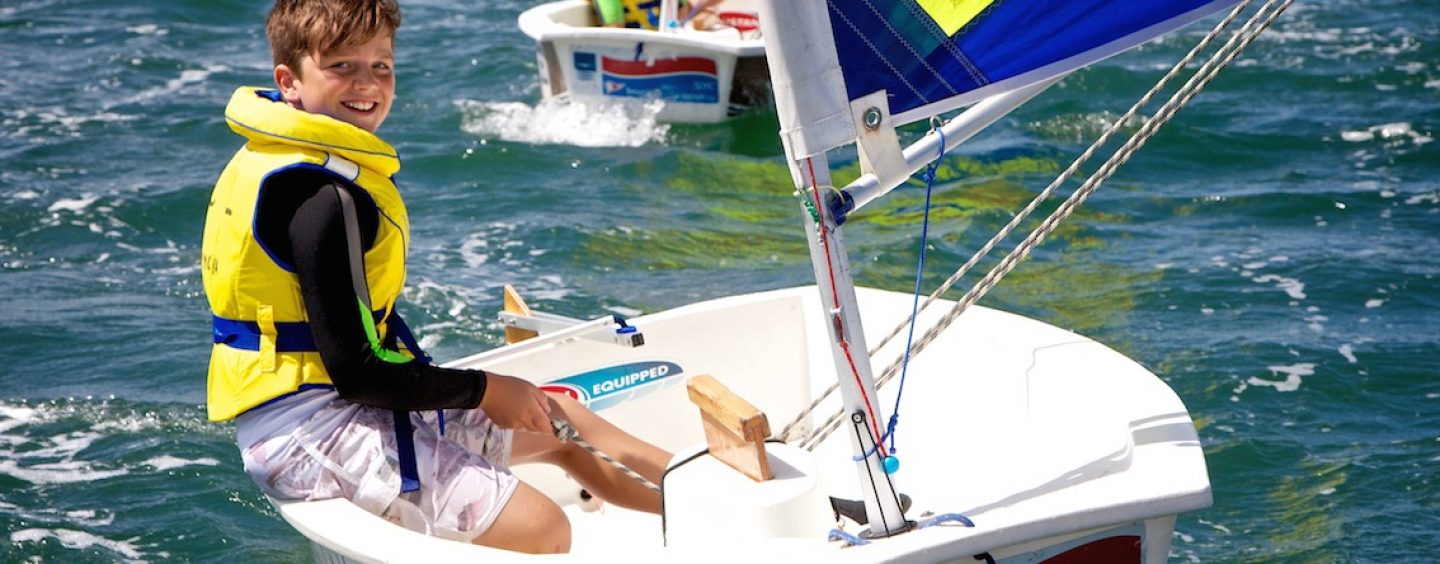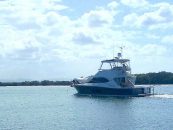So you have finally purchased a 4.8-metre open boat. You then set out to do some shopping for safety equipment. Your 11-year-old is helping out with the fishing gear, and your cheeky 7-year-old is just happy to go along. The boxes on your checklist are slowly getting ticked off. Next on the list are the lifejackets. Before you head out to buy your kids their lifejackets, there are very basic things that you will need to understand.
The Queensland law requires that children under 12 years of age in an open boat less than 4.8m in length must wear a lifejacket at all times when they are in a vessel underway.
A lifejacket or a personal flotation device (PFD) is a vital piece of safety equip- ment that can and will save a life. Children, in particular, need to be fitted properly to ensure that the lifejackets serve their purpose – to keep them afloat when needed.
“When buying a lifejacket for your children or yourself, the best thing you can do is try on the lifejacket, and to choose one that is comfortable and fits correctly,” advises David Hopper, a senior advisor at Maritime Safety Queensland.
Choose a lifejacket for your child’s weight range and make sure the size or cut of the lifejacket is suitable. It should fit snugly without being confining or riding up on the child’s body. Make sure the neck section or collar does not sit up around the head. A crotch strap will prevent the lifejacket from bunching up around your or your child’s neck and prevent them from falling out of the bottom of the lifejacket. Do not think that a bigger lifejacket is better so your child can grow into it. “It’s important to remember that having your child in an ill-fitting or oversize lifejacket my put their life at risk as a small child can easily slip out of an adult lifejacket once in the water,” warns David.
It is recommended that the child be able to fit the lifejacket at the shop, to ensure that the lifejacket is fit for his/her weight. David further advises, “It is also a good idea for you and your child to try out your lifejacket in a controlled envi- ronment, such as a swimming pool or in a small shallow area, where you can get an understanding of how that lifejacket is going to behave on you when you’re in the water.”
Younger children may feel very uncomfortable wearing a lifejacket all the time, so it is essential to explain to them the importance of wearing it. David recommends, “Take off the lifejacket whilst you’re in the water and try and put it back on again and try and get your children to do this as well. Have fun in your lifejacket, so they can understand how they’re going to behave, react and what it feels like to be wearing that lifejacket for a long period of time.”
When at the shops, make sure you read the labels for the weight ranges, and their suitability for the water type and conditions where you will be boating. Always ask for expert advice if you are unsure of which lifejacket is appropriate.
On a final note, David states: “Ensure you have suitable lifejackets on board for both the intended area of operation, and also the size and weight of each person on board.”
For more information on safety, visit www.msq.qld.gov.au.
By Roselle Tenefrancia
Cover image courtesy of Southport Yacht Club
(Published in the Oct-Dec 2019 edition)



























